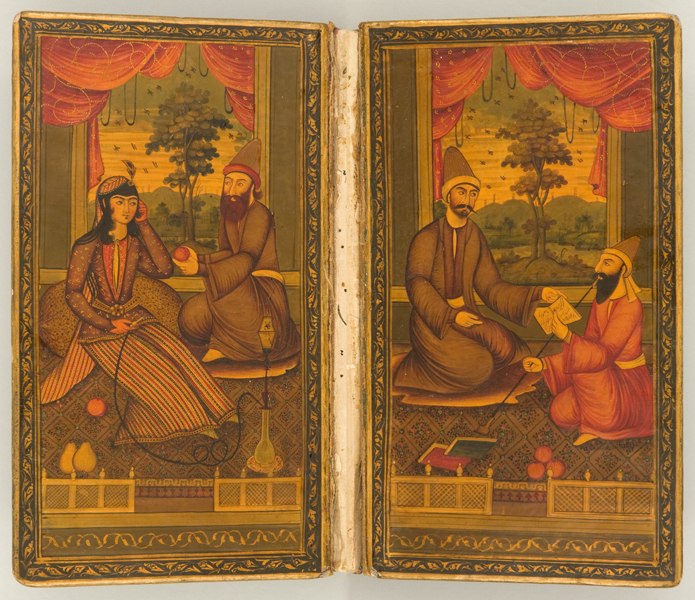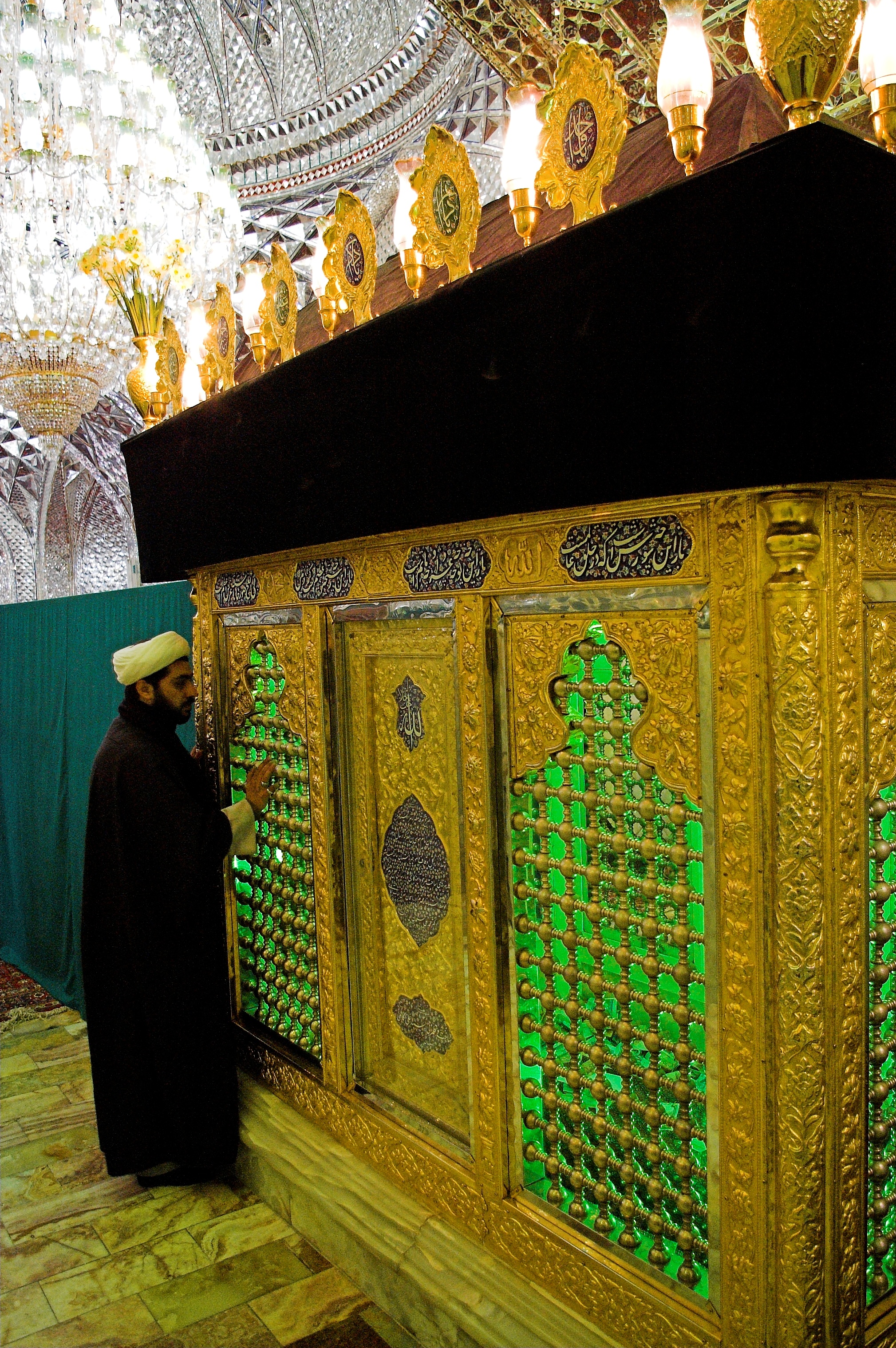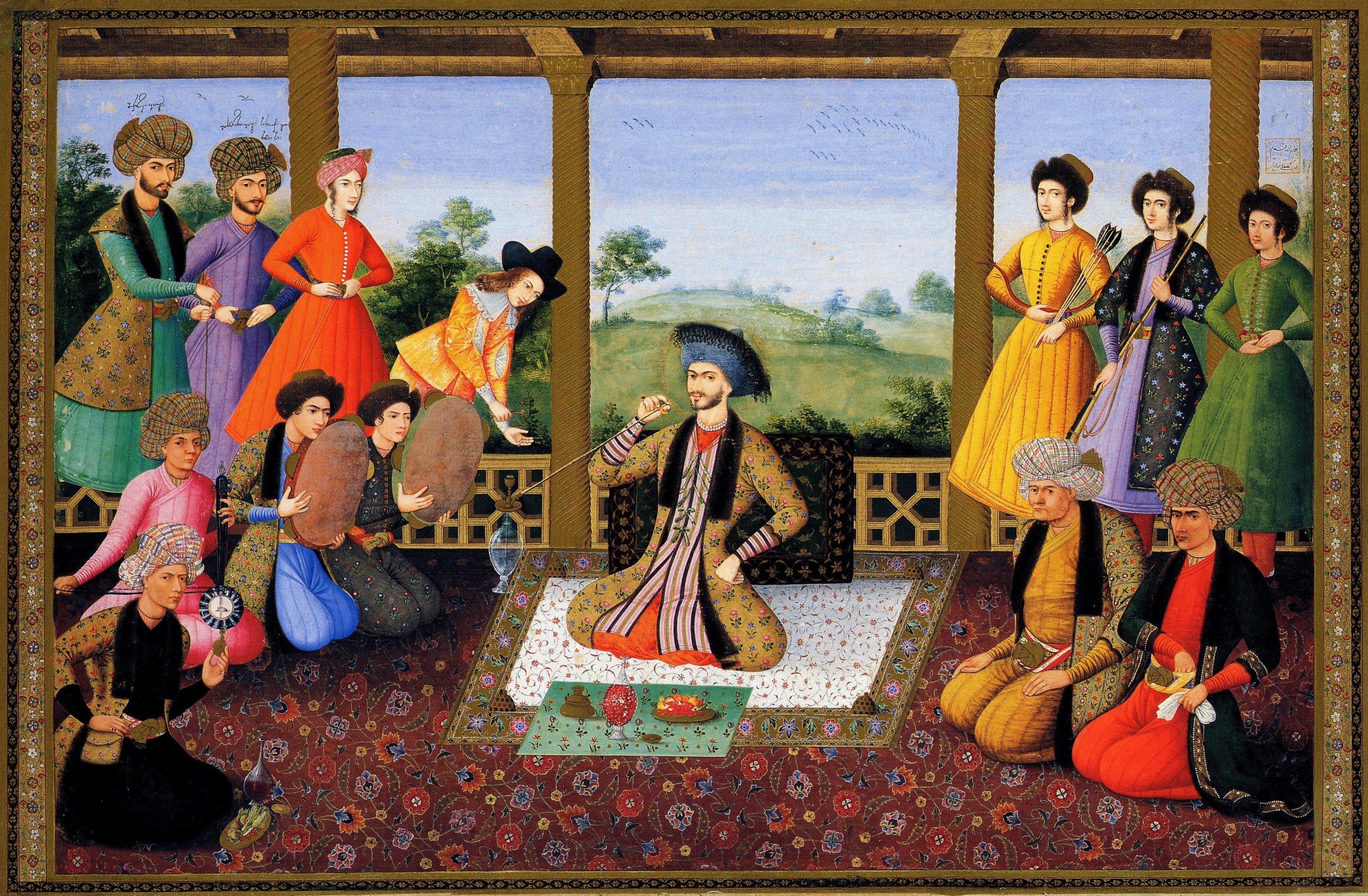|
Nima Yooshij
Nima Yooshij or Nimā Yushij (; 11 November 1895 – 6 January 1960), also called Nimā (), born Ali Esfandiari (), was a prominent Iranian poet. He is famous for his style of poetry which he popularised, called ''she'r-e now'' (, lit. "new poetry"), also known as '' She'r-e Nimaa'i'' (, lit "Nima poetry") in his honour after his death. He is considered the father of modern Persian poetry. He died of pneumonia in Shemiran, northern Tehran. Following his will, he was buried in his native village of Yush, Nur County, Mazandaran. Early life He was the eldest son of Ibrahim Nuri of Yush (a village in Baladeh, Nur County, Mazandaran province). He was a Tabarian, but also had Georgian roots on his maternal side. He grew up in Yush, mostly helping his father with the farm and taking care of the cattle. As a boy, he visited many local summer and winter camps and mingled with shepherds and itinerant workers. Images of life around the campfire, especially those emerging from t ... [...More Info...] [...Related Items...] OR: [Wikipedia] [Google] [Baidu] |
Shemiran
Shemirān (, ) is the capital of Shemiranat County, Tehran Province, Iran, but is actually located just north of the borders of Tehran County along Chamran Expressway and Sadr Expressway and it is the northernmost district of the city of Tehran. Shemiran lies in the slopes of Alborz Mountain and enjoys a suitable mild climate. It has fine and well-kept parks and is home to the richest class of Iranian society. Most of the foreign embassies and the Tehran International Fair are situated in Shemiran. It is also where Imam Zadeh Saleh is, and where the former home of Ruhollah Khomeini was located. Among the neighborhoods of Shemiran are: Darakeh, Darband, Jamaran, and Niavaran on the far north, as well as Zafaraniyeh, Elahiyeh, Velenjak, Gheytarieh, Farmanieh and Kamranieh. Etymology The word ''Shemiran'' or ''Shemran'' derives from the Assyrian language word ''Chamran'', which derives in turn from the name of the mythological Queen '' Shamiram'' who conquere ... [...More Info...] [...Related Items...] OR: [Wikipedia] [Google] [Baidu] |
Pneumonia
Pneumonia is an Inflammation, inflammatory condition of the lung primarily affecting the small air sacs known as Pulmonary alveolus, alveoli. Symptoms typically include some combination of Cough#Classification, productive or dry cough, chest pain, fever, and Shortness of breath, difficulty breathing. The severity of the condition is variable. Pneumonia is usually caused by infection with viruses or bacteria, and less commonly by other microorganisms. Identifying the responsible pathogen can be difficult. Diagnosis is often based on symptoms and physical examination. Chest X-rays, blood tests, and Microbiological culture, culture of the sputum may help confirm the diagnosis. The disease may be classified by where it was acquired, such as community- or hospital-acquired or healthcare-associated pneumonia. Risk factors for pneumonia include cystic fibrosis, chronic obstructive pulmonary disease (COPD), sickle cell disease, asthma, diabetes, heart failure, a history of smoking, ... [...More Info...] [...Related Items...] OR: [Wikipedia] [Google] [Baidu] |
Hafez
(), known by his pen name Hafez ( or 'the keeper'; 1325–1390) or Hafiz, “Ḥāfeẓ” designates someoone who has learned the Qurʾān by heart" also known by his nickname Lisan al-Ghaib ('the tongue of the unseen'), was a Persian lyric poet whose collected works are regarded by many Iranians as one of the highest pinnacles of Persian literature. His works are often found in the homes of Persian speakers, who learn his poems by heart and use them as everyday proverbs and sayings. His life and poems have become the subjects of much analysis, commentary, and interpretation, influencing post-14th century Persian writing more than any other Persian author. Hafez is best known for his '' Divān'', a collection of his surviving poems probably compiled after his death. His works can be described as " antinomian" and with the medieval use of the term "theosophical"; the term "theosophy" in the 13th and 14th centuries was used to indicate mystical work by "authors only inspired ... [...More Info...] [...Related Items...] OR: [Wikipedia] [Google] [Baidu] |
Saadi (poet)
Abu Mohammad Moshrefoldin Mosleh ebn Abdollah ebn Mosharraf, better known by his pen name Saadi (; , ), also known as Saadi of Shiraz (, ''Saʿdī Shīrāzī''; born 1210; died 1291 or 1292), was a Persian poet and prose writer of the medieval period. He is recognized for the quality of his writings and for the depth of his social and moral thoughts. Saadi is widely recognized as one of the greatest poets of the classical literary tradition, earning him the nickname "The Master of Speech" or "The Wordsmith" ( ''ostâd-e soxan'') or simply "Master" ( ''ostâd'') among Persian scholars. He has been quoted in the Western traditions as well. His book, '' Bustan'' has been ranked as one of the 100 greatest books of all time by ''The Guardian''. Background and name Saadi Shirazi's birth date is uncertain; most scholars consider him to have been born in 1209 or 1210. He was from the city of Shiraz, the provincial capital of the Fars province. Since 1148, the province had been under ... [...More Info...] [...Related Items...] OR: [Wikipedia] [Google] [Baidu] |
Nezam Vafa
Khvajeh Nezam-e Chahar Dang (, also Romanized as Khvājeh Nez̧ām-e Chahār Dāng; also known as Khakenesun, Khāk Nezām, Khvājeh Nez̧ām, and Nez̧ām Vafā) is a village in Howmeh Rural District, in the Central District of Bam County, Kerman Province, Iran Iran, officially the Islamic Republic of Iran (IRI) and also known as Persia, is a country in West Asia. It borders Iraq to the west, Turkey, Azerbaijan, and Armenia to the northwest, the Caspian Sea to the north, Turkmenistan to the nort .... At the 2006 census, its population was 203, in 49 families. References Populated places in Bam County {{BamIran-geo-stub ... [...More Info...] [...Related Items...] OR: [Wikipedia] [Google] [Baidu] |
Roman Catholic
The Catholic Church (), also known as the Roman Catholic Church, is the largest Christian church, with 1.27 to 1.41 billion baptized Catholics worldwide as of 2025. It is among the world's oldest and largest international institutions and has played a prominent role in the history and development of Western civilization. O'Collins, p. v (preface). The church consists of 24 ''sui iuris'' (autonomous) churches, including the Latin Church and 23 Eastern Catholic Churches, which comprise almost 3,500 dioceses and eparchies around the world, each overseen by one or more bishops. The pope, who is the bishop of Rome, is the chief pastor of the church. The core beliefs of Catholicism are found in the Nicene Creed. The Catholic Church teaches that it is the one, holy, catholic and apostolic church founded by Jesus Christ in his Great Commission, that its bishops are the successors of Christ's apostles, and that the pope is the successor of Saint Peter, upo ... [...More Info...] [...Related Items...] OR: [Wikipedia] [Google] [Baidu] |
Mullah
Mullah () is an honorific title for Islam, Muslim clergy and mosque Imam, leaders. The term is widely used in Iran and Afghanistan and is also used for a person who has higher education in Islamic theology and Sharia, sharia law. The title has also been used in some Mizrahi Jews, Mizrahi and Sephardic Jews, Sephardic Jewish communities in reference to the community's leadership, especially its religious leadership. Etymology The word ''mullah'' is derived from the Persian language, Persian word ''mullā'' (), itself borrowed from the Arabic language, Arabic word ''mawlā'' (), meaning "master" and "guardian", with mutation of the initial short vowels. Usage Historical usage The term has also been used among Iranian Jews, Bukharian Jews, and Afghan Jews to refer to the community's religious and/or secular leadership. In Kaifeng, China, the history of the Jews in China, historic Chinese Jews who managed the synagogue were called "mullahs". Modern usage It is the term ... [...More Info...] [...Related Items...] OR: [Wikipedia] [Google] [Baidu] |
Maktab (education)
A kuttab ( ''kuttāb'', plural: ''kataatiib'', ) or maktab () is a type of elementary school in the Muslim world. Though the ''kuttab'' was primarily used for teaching children in reading, writing, grammar, and Islamic studies, such as memorizing and reciting the Qur'an (including ''Qira'at''), other practical and theoretical subjects were also often taught. The kuttāb represents an old-fashioned method of education in Muslim majority countries, in which a sheikh teaches a group of students who sit in front of him on the ground. Until the 20th century, when modern schools developed, kuttabs were the prevalent means of mass education in much of the Islamic world. Name Kuttab refers to only elementary schools in Arabic. This institution can also be called a ''maktab'' () or ''maktaba'' () in Arabic—with many transliterations. In common Modern Standard Arabic usage, ''maktab'' means "office" while ''maktabah'' means "library" or "(place of) study" and ''kuttāb'' is a plural wor ... [...More Info...] [...Related Items...] OR: [Wikipedia] [Google] [Baidu] |
House Of Nima (2)
A house is a single-unit residential building. It may range in complexity from a rudimentary hut to a complex structure of wood, masonry, concrete or other material, outfitted with plumbing, electrical, and heating, ventilation, and air conditioning systems.Schoenauer, Norbert (2000). ''6,000 Years of Housing'' (rev. ed.) (New York: W.W. Norton & Company). Houses use a range of different roofing systems to keep precipitation such as rain from getting into the dwelling space. Houses generally have doors or locks to secure the dwelling space and protect its inhabitants and contents from burglars or other trespassers. Most conventional modern houses in Western cultures will contain one or more bedrooms and bathrooms, a kitchen or cooking area, and a living room. A house may have a separate dining room, or the eating area may be integrated into the kitchen or another room. Some large houses in North America have a recreation room. In traditional agriculture-oriented societies, domes ... [...More Info...] [...Related Items...] OR: [Wikipedia] [Google] [Baidu] |
Iranian Georgians
Iranian Georgians or Persian Georgians ( ka, ირანის ქართველები; ) are Iranian citizens who are ethnically Georgian, and are an ethnic group living in Iran. Today's Georgia was a subject of Iran in ancient times under the Achaemenid and Sassanian empires and from the 16th century till the early 19th century, starting with the Safavids in power and later Qajars. Shah Abbas I, his predecessors, and successors, relocated by force hundreds of thousands of Christian, and Jewish Georgians as part of his programs to reduce the power of the Qizilbash, develop industrial economy, strengthen the military, and populate newly built towns in various places in Iran including the provinces of Isfahan ( Fereydan, Fereydunshahr, and Buin-Miandasht ), Mazandaran, Gilan, Semnan, Fars, Azerbaijan, Khorasan and Khuzestan. A certain number of these, among them members of the nobility, also migrated voluntarily over the centuries, as well as some that moved as muh ... [...More Info...] [...Related Items...] OR: [Wikipedia] [Google] [Baidu] |
Mazandarani People
Mazanderanis (), also known as the Tabari people or Tabarestani people ( or ), are an Iranian peoplesAcademic American Encyclopedia By Grolier Incorporated, page 294 who are indigenous to the Caspian Sea region of Iran. They are also referred to as Mazanis for short. They inhabit the southern coast of the Caspian Sea and are part of the historical region known as Tabaristan. The Alborz, Alborz Mountains mark the southern boundary of the area settled by the Mazanderani people. People The population of Mazanderanis was 4,480,000 in 2019. As per a 2006 estimate, Mazandaranis numbered between 3 and 4 million. Mazanderani people are also known as the Tabari people, and traditionally call the Mazanderani language as Tabari. Their region was called Tapuria or Tapurestan, Land of Tapuris. Most Mazanderanis live on the southeastern coast of Caspian Sea. Their traditional professions are farming and fishing. Mazandaranis are closely related to the neighboring Gilaks, Gilaki people as ... [...More Info...] [...Related Items...] OR: [Wikipedia] [Google] [Baidu] |







